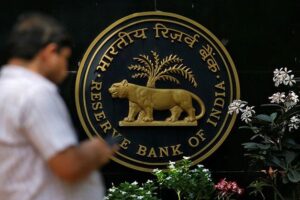Interest rates: Higher inflation, oil price to keep RBI on hold

The rise in consumer price index (CPI) inflation could see the Reserve Bank of India (RBI) in an extended pause mode as regards interest rates, and in turn, keep the market rally in check, believe analysts.
Signs of inflation cooling off in the US, however, is likely to provide some cushion as the expectations of a change in stance by the US Fed as regards interest rates is likely to aid sentiment.
Back home, CPI inflation surged for the first time in five months to 4.81 per cent in June 2023, and was higher than the street’s expectations of 4.58 per cent.
The entire jump in CPI, analysts suggest, was driven by a 152 basis points (bps) increase in food inflation to 4.5 per cent in June 2023 from 3 per cent in May 2023.
“Vegetables, pulses, spices and fruits have been major drivers of food inflation.
“Out of 12 broad categories of food inflation, six noticed inflation higher than 6 per cent, with items such as cereals, pulses and spices remaining in double-digits.
“On sequential basis, cereals, protein based items such as meat and fish and eggs, vegetables, fruits and pulses have noted considerable increase in June 2023 compared to May 2023.
We expect the RBI to remain on hold in CY23,” suggests a note by economists at Bank of Baroda.
Another worry for the RBI and the markets are the monsoons back home (intensity and spatial distribution), and crude oil prices, which surged past $80 a barrel (Brent) for the first time since early May amid signs of tightening supplies and slower-than-expected US inflation.
India imports nearly 80 per cent of its crude oil requirement.
Food inflation, according to analysts at Kotak Securities, will remain a threat and the RBI is likely to remain in a wait-and-watch mode in fiscal 2023-24 (FY24).
“A weak start to the monsoon has increased certain tomato prices beyond the usual seasonal impact.
“A weak monsoon in July-August could make this a broad-based upside across various food items.
“This may not bode well for market expectations of an early rate cut cycle,” wrote Suvodeep Rakshit, Upasna Bhardwaj and Anurag Balajee of Kotak Securities in a recent note.
Raining worries
Intensity and the spatial distribution of monsoon is another worry for the economy and markets, according to G Chokkalingam, managing director for research at Equinomics Research & Advisory.
Unless the spatial distribution of rainfall improves, he believes retail inflation is likely to shoot up in July as well.
This, in turn, would cause a delay in the interest rate cut by the RBI for at least another quarter.
“Markets are likely to fall a maximum 3 per cent to 5 per cent if spatial distribution of rainfall does not improve in the next three weeks.
“Small-caps are a risky bet at the current juncture, as many small-cap stocks have multiplied manifold.
“History also shows the fact that the small-cap segment usually falls badly once in three years after a major rally.
“Retail investors should be cautious on overvalued small-caps, and should increase tilt towards large-caps and around 5 per cent exposure each to cash and Gold ETFs,” he said.
Technical charts, too, suggest that the markets are likely to run into a resistance zone soon.
The Nifty50 index, according to Vikas Salunkhe, senior assistant vice-president at Nirmal Bang, has an immediate resistance at 19,500 levels.
“If the Nifty50 closes above that, a further upside can be expected towards the 19,600 – 19,680 mark.
“On the flip side, 19,300-19,180 will act as strong support levels.
“It’s a stock specific market investors must trade with strict stop losses,” he suggests.
Source: Read Full Article

